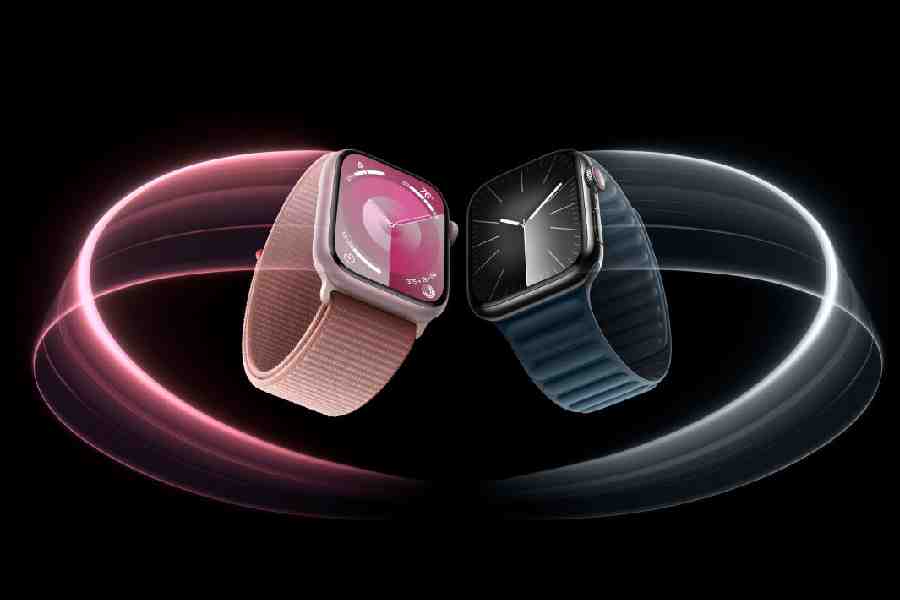Today is World Diabetes Day and the situation continues to become complicated. Worldwide, about 537 million adults are living with diabetes, a number projected to reach 643 million by 2030 and 783 million by 2045. This is according to International Diabetes Federation. A recent study published in the Lancet, offers a grim view: The number of people worldwide with diabetes is projected to reach 1.3 billion by 2050. Either way, the figures appear to be a nightmare.
This year, researchers from Harvard’s Brigham and Women’s Hospital and Harvard’s T.H. Chan School of Public Health collaborated on a study update evaluating the effects of physical activity and the menstrual cycle on glucose. The Apple Heart and Movement Study (AHMS) and the Apple Women’s Health Study (AWHS) have new insights on glucose response to activity and the menstrual cycle.
First, an overview. The most common forms of diabetes result from an inability to produce enough insulin (type 1 or T1D) or an inability to properly use insulin (type 2 or T2D). Symptoms of high glucose and diabetes may include frequent hunger, thirst, urination, and fatigue, as well as blurry vision, numbness or tingling in hands or feet, unexplained weight loss, and infections or wounds that take longer to heal.
For people with diabetes, maintaining glucose within a target range is a challenge.
Continuous glucose monitors (CGM) allow people with diabetes gain insight into how different foods, activities, and life stressors affect glucose. Here’s where insights from AHMS and AWHS come in: It pairs CGM data contributed by participants through Health app with activity data from Apple Watch in AHMS and separately, with logged menstrual cycle data in AWHS.
Activity and glucose level
One of the questions tackled is does activity affect glucose levels? During and after exercise, insulin sensitivity often increases. Muscle cells increase glucose consumption which lowers glucose.
As participants increased either the average duration of exercise or the average number of steps taken on a given day, there was a corresponding increase in the average percentage of time glucose fell within the target range of 70-180 mg/dL.
People who exercised more than 30 minutes per day spent 78.8 per cent in the target range of 70-180 mg/dL. Participants who identified as female and walked more than 10,000 steps per day saw the most time spent in the target range of 70-180 mg/dL, compared to 76.4 per cent of participants who identified as male.
“Empowering users to move their personal physiology in the right direction is a fundamental foundation of precision health and medicine. Apple Watch enables users to determine how best to improve their cardiometabolic risk,” says Calum MacRae, a cardiologist, professor of medicine at Harvard Medical School, and principal investigator of the Apple Heart and Movement Study at Brigham and Women’s Hospital.
Menstrual cycle and glucose level
And does menstrual cycle affect glucose? The menstrual cycle is regulated by many different hormones including estrogen and progesterone which have been linked to changes in glucose and insulin sensitivity.

Apple Watch Series 9 comes with the S9 SiP Picture: Apple
“In a preliminary analysis, our research team has identified an intriguing pattern in continuous glucose measurements across the menstrual cycle among people with regular cycles. During the follicular phase, which is characterised by higher estrogen levels and low progesterone levels, we’ve observed a slight increase in the time spent within the target glucose range. This discovery holds the potential to significantly improve diabetes management by providing valuable insights for optimising blood sugar control,” says Shruthi Mahalingaiah, assistant professor of environmental, reproductive, and women’s health at the Harvard T.H. Chan School of Public Health and also co-principal investigator of the Apple Women’s Health Study.
CGM data were collected from 231 individuals who consented to participate in the AWHS. Data on menstrual cycles for participants were included in the analyses when there were at least six consecutive cycles reported and were excluded if hormone use was reported at any time during the cycle, such as use of hormonal contraception.
Analyses of glucose levels across 1,982 menstrual cycles highlighted a slight increase in time spent within the target range of 70-180 mg/dL during the follicular phase when progesterone levels are lower (68.5 per cent of day) compared to the luteal phase (66.8 per cent of day).
“The connection between the menstrual cycle, glucose levels, and insulin sensitivity, influenced by hormones such as estrogen and progesterone, is noted in our preliminary findings. This preliminary analysis may pave the way for a more in-depth examination of the relationship between menstrual cycle phases and glucose levels, offering potential implications for diabetes management,” says Mahalingaiah.
Early detection of diabetes and intensive glucose management can reduce the risk and severity of many complications.
Using the Apple Watch
In 2019, Apple CEO Tim Cook said in an interview with CNBC: “If you zoom out into the future and you look back, and you ask the question: what was Apple’s greatest contribution to mankind, it will be about health.” What can you do with the Apple Watch?
Activity app: Lifestyle factors like regular exercise can help with glucose management. The Activity app allows you to set goals, record duration, and receive reminders about exercise targets.
Cycle Tracking: You can track your menstrual cycle, receive period predictions, as well as retrospective estimates of when you likely ovulated. Understanding where you are at in your cycle and learning about how different phases impact glucose may be helpful in managing diabetes.
Sleep: Consistent sleep or its lack may influence your glucose levels. With the Sleep app, you can set a sleep schedule, receive reminders when to wind down, and track how well you are doing in meeting your sleep goals.
Third-party apps: There are also several third-party iOS apps affiliated with glucose meters, including CGMs, that help users measure and track their glucose.











